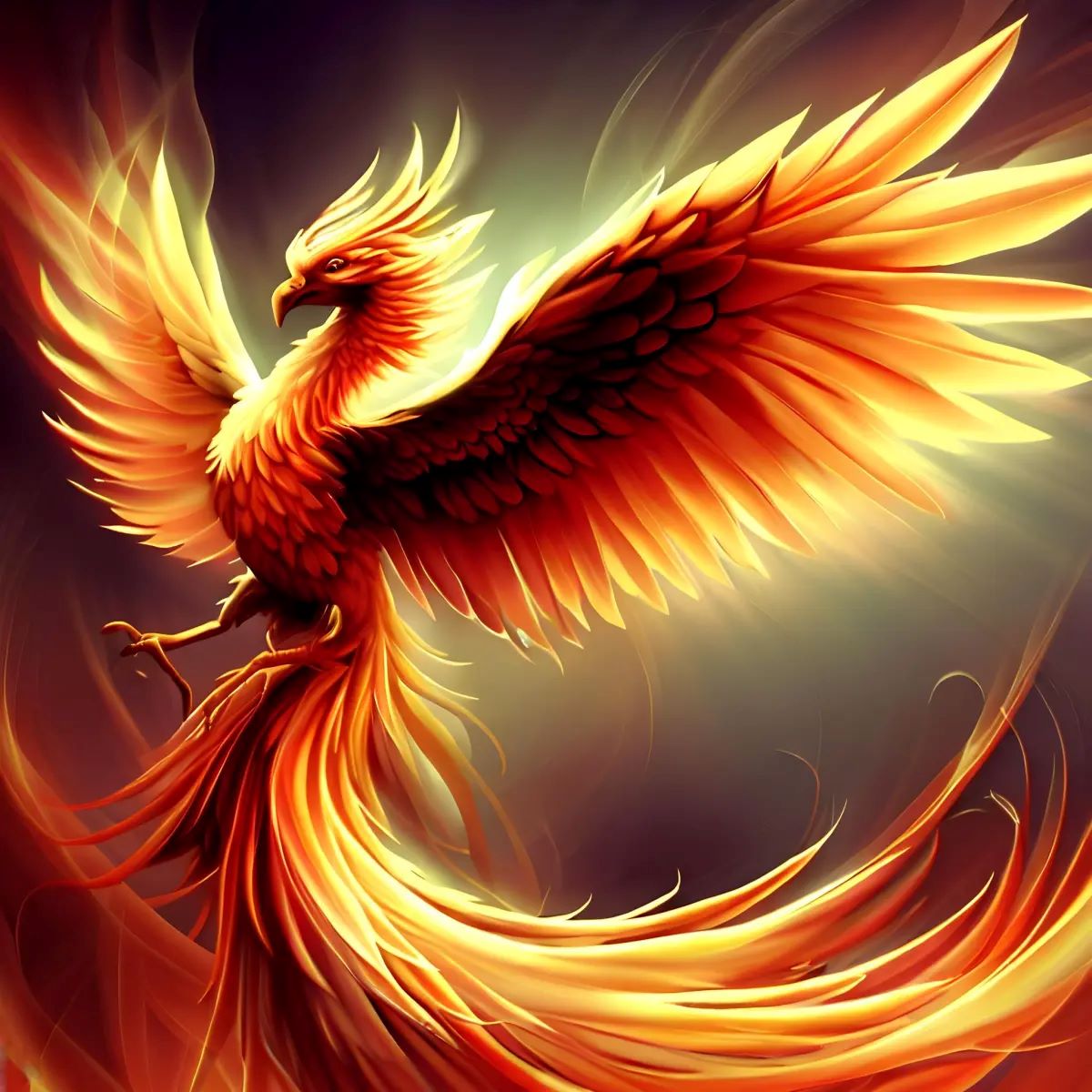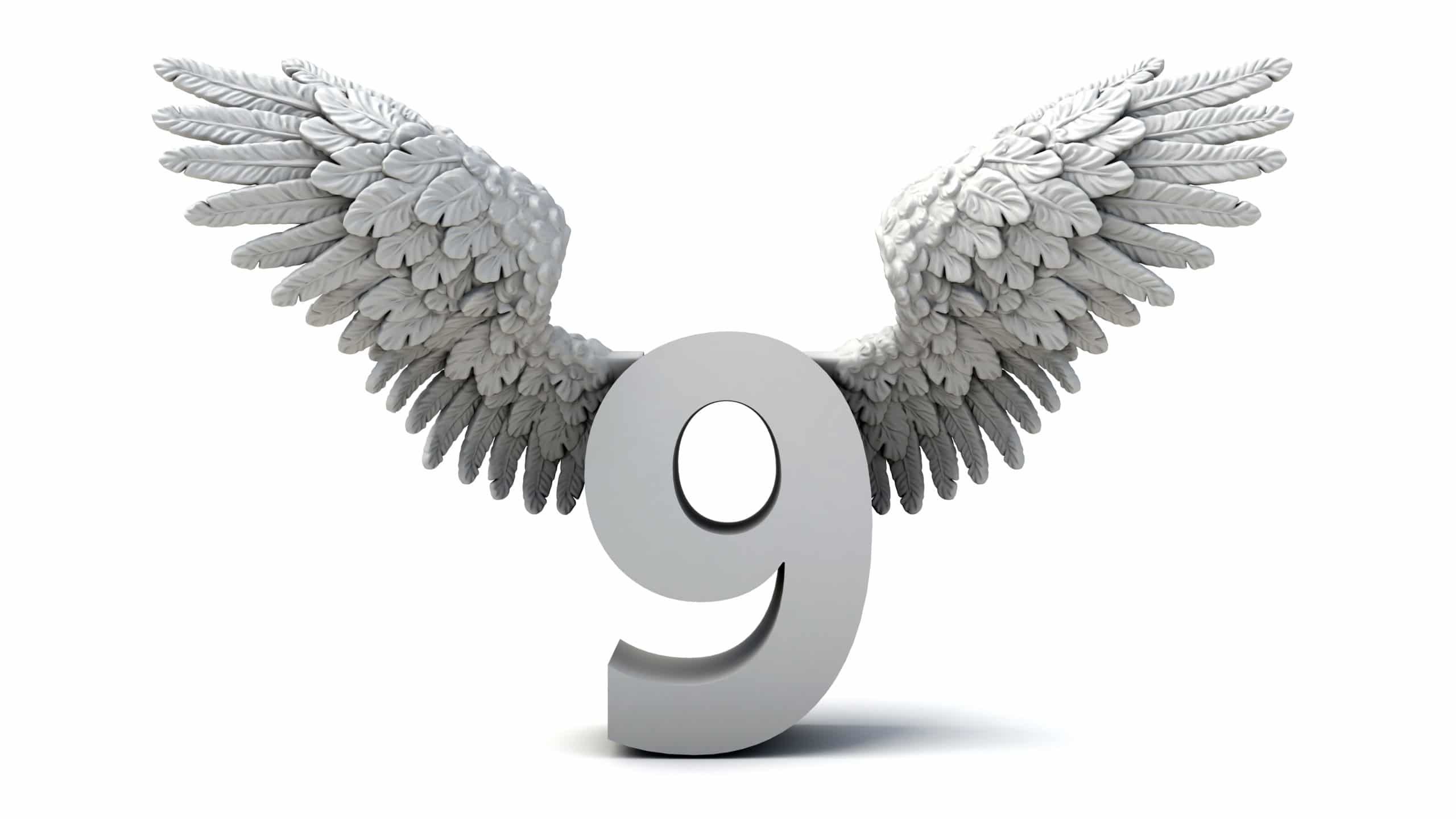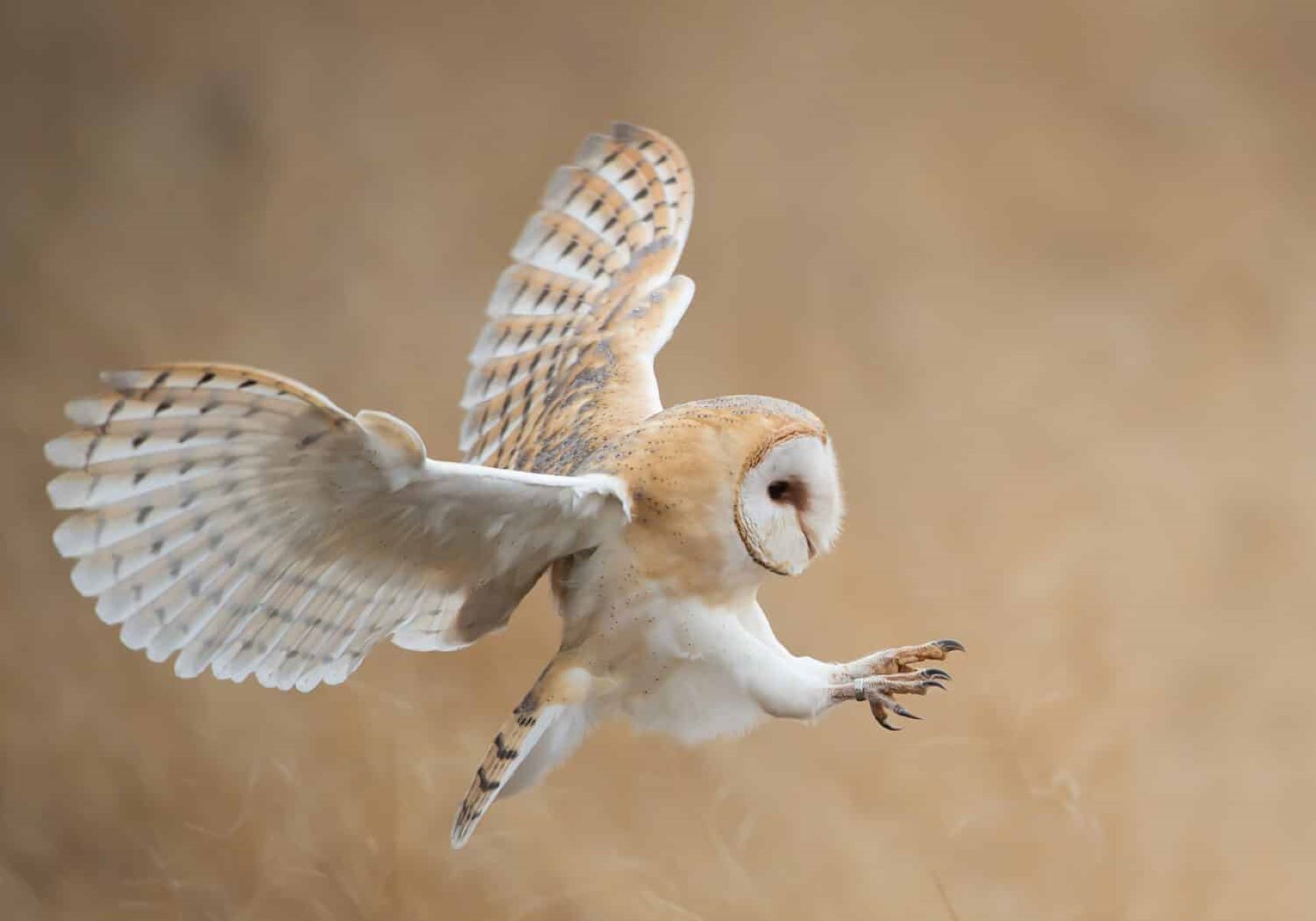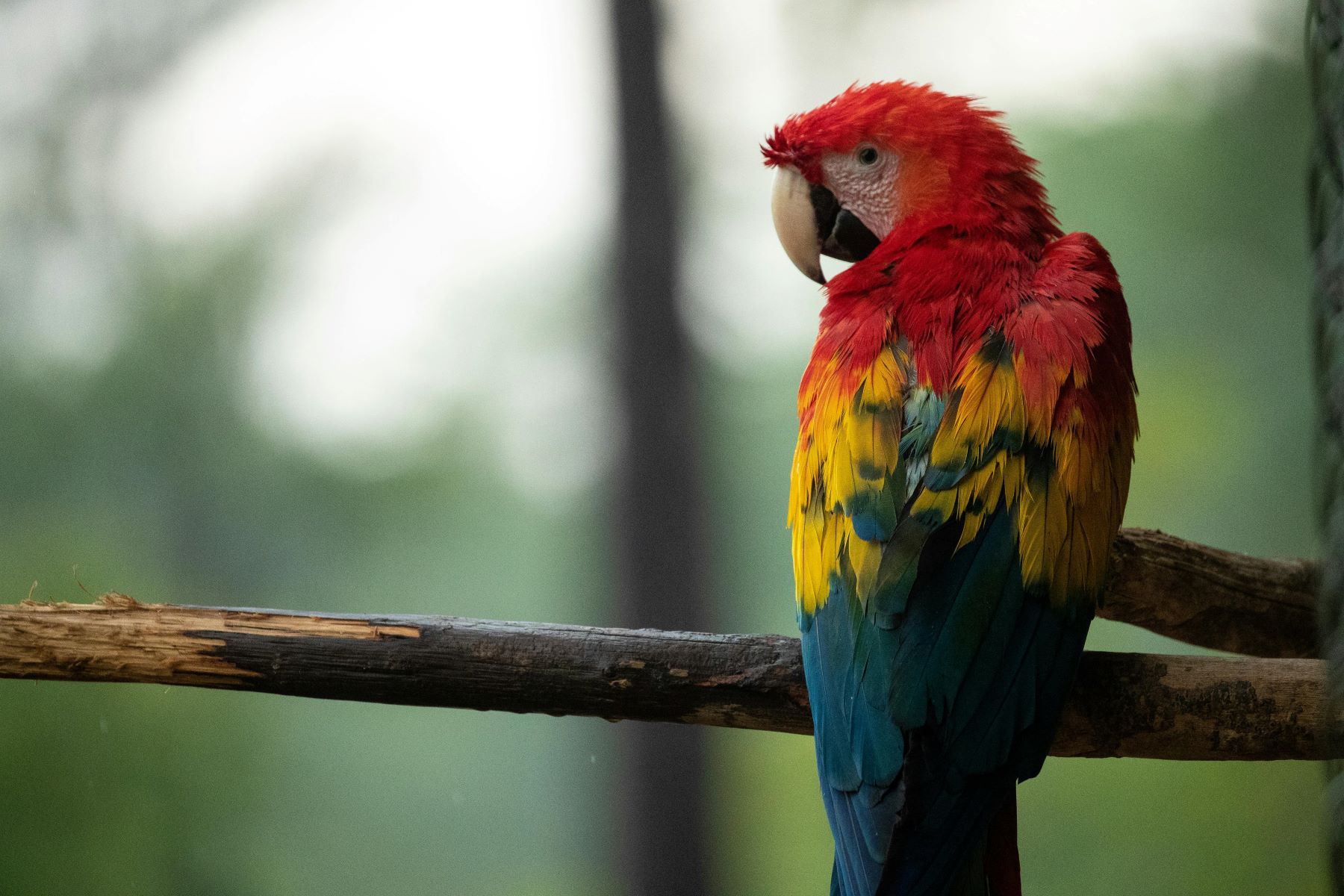Home>Arts and Culture>10 Powerful Symbols Of Renewal, Rebirth, And Redemption


Arts and Culture
10 Powerful Symbols Of Renewal, Rebirth, And Redemption
Published: January 29, 2024
Discover 10 powerful symbols of renewal, rebirth, and redemption in arts and culture. Explore the significance of these timeless motifs.
(Many of the links in this article redirect to a specific reviewed product. Your purchase of these products through affiliate links helps to generate commission for Regretless.com, at no extra cost. Learn more)
Phoenix
The phoenix, a majestic and mythical creature, has captivated the human imagination for centuries. Across diverse cultures and belief systems, the phoenix symbolizes renewal, rebirth, and redemption. This legendary bird is renowned for its remarkable ability to rise from the ashes, embodying the powerful concept of transformation and resilience.
Symbolism and Meaning
In various mythologies, the phoenix is revered as a symbol of immortality and renewal. According to ancient tales, the phoenix lives a long life, often spanning hundreds of years, before undergoing a magnificent self-immolation. From the ashes of its fiery demise, the phoenix emerges anew, embodying the cycle of death and rebirth. This profound symbolism resonates deeply with individuals seeking hope and renewal in the face of adversity.
Cultural Significance
The phoenix holds significant cultural importance across civilizations. In ancient Egyptian mythology, the Bennu bird, closely associated with the sun god Ra, shares striking similarities with the phoenix. Similarly, in Greek mythology, the phoenix is linked to the sun god Apollo, representing the eternal cycle of life, death, and resurrection. Moreover, in Chinese folklore, the Fenghuang, often referred to as the "Chinese phoenix," symbolizes harmony, prosperity, and the union of yin and yang.
Artistic Depictions
Art and literature have frequently depicted the phoenix as a symbol of transformation and triumph over adversity. From ancient manuscripts to contemporary paintings, the phoenix is portrayed in vibrant hues of red, gold, and orange, symbolizing the fiery rebirth from its own ashes. This imagery has inspired countless artists and storytellers, resonating with audiences seeking inspiration and inner strength.
Contemporary Relevance
In modern times, the phoenix continues to inspire individuals navigating personal challenges and societal upheavals. Its symbolism is often invoked in literature, popular culture, and even corporate branding, signifying resilience, reinvention, and the indomitable human spirit. The enduring allure of the phoenix serves as a timeless reminder that from the ashes of despair, hope and renewal can emerge.
The phoenix, with its profound symbolism of renewal, rebirth, and redemption, stands as a timeless emblem of resilience and transformation. Across cultures and throughout history, this legendary bird continues to ignite the human imagination, offering a powerful symbol of hope and renewal in the face of adversity.
Lotus
The lotus, revered for its exquisite beauty and profound symbolism, holds a special place in the hearts and minds of people across various cultures. Emerging gracefully from murky waters, the lotus symbolizes purity, enlightenment, and the journey of spiritual awakening.
Symbolism and Meaning
In Eastern traditions, the lotus is deeply rooted in symbolic significance. Its growth from the muddy depths of ponds and marshes to bloom into a stunning flower mirrors the human journey towards enlightenment. The lotus represents the purity of the soul amidst the challenges and impurities of the material world. Its ability to rise above the mire and blossom in pristine beauty embodies the transformative power of spiritual growth and resilience.
Cultural Significance
The lotus holds profound cultural significance in Eastern philosophies and religions. In Hinduism and Buddhism, the lotus is a sacred symbol, often associated with deities and enlightenment. The revered deities, such as Lakshmi and Saraswati in Hinduism, and Buddha in Buddhism, are often depicted seated on or holding a lotus, signifying purity, divine beauty, and spiritual enlightenment.
Artistic Depictions
Artists and artisans have long been inspired by the lotus, incorporating its elegant form into paintings, sculptures, and architectural designs. From ancient temple carvings to contemporary artworks, the lotus is celebrated for its serene and captivating presence. Its delicate petals and serene symbolism have made it a timeless motif in art, evoking a sense of tranquility and spiritual grace.
Contemporary Relevance
In the modern world, the lotus continues to resonate with individuals seeking inner peace and spiritual growth. Its enduring symbolism has transcended cultural boundaries, capturing the imagination of people around the globe. The lotus serves as a poignant reminder that amidst life's challenges and adversities, one can cultivate inner purity, resilience, and spiritual enlightenment.
The lotus, with its timeless symbolism of purity and spiritual awakening, remains an enduring emblem of hope and transformation. Its delicate beauty and profound meaning continue to inspire individuals on their journey towards inner peace and enlightenment.
Butterfly
The butterfly, with its enchanting metamorphosis from a humble caterpillar to a resplendent winged creature, embodies the profound symbolism of renewal, rebirth, and redemption. This captivating insect has captivated the human imagination across cultures and ages, serving as a powerful emblem of transformation and resilience.
Symbolism and Meaning
The butterfly's remarkable life cycle has long been associated with profound symbolism. The journey from a caterpillar, encapsulated within a chrysalis, to emerging as a vibrant butterfly represents the transformative process of personal growth and spiritual evolution. This awe-inspiring metamorphosis symbolizes the capacity for profound change and renewal in the face of adversity. The butterfly's delicate yet resilient nature serves as a poignant reminder that even in the midst of darkness, there is the potential for profound beauty and renewal.
Cultural Significance
The symbolism of the butterfly transcends cultural boundaries, resonating deeply with diverse civilizations. In many indigenous cultures, the butterfly is revered as a powerful symbol of endurance, change, and hope. In Native American traditions, the butterfly is associated with the concept of rebirth and renewal, carrying messages of transformation and spiritual awakening. Similarly, in Japanese culture, the butterfly is celebrated as a symbol of the soul and is often associated with joy and longevity.
Artistic Depictions
Artists and poets have long been inspired by the ephemeral beauty of the butterfly, incorporating its imagery into paintings, literature, and folklore. From ancient cave paintings to contemporary art installations, the butterfly's graceful form has been a timeless muse for creative expression. Its vibrant wings and graceful flight have symbolized the ephemeral yet enduring nature of life, inspiring countless works of art that capture the essence of transformation and renewal.
Contemporary Relevance
In the modern world, the butterfly continues to inspire individuals seeking personal growth and renewal. Its symbolism is often invoked in therapeutic practices and self-help literature, serving as a potent metaphor for resilience and inner transformation. The butterfly's enduring allure serves as a poignant reminder that amidst life's challenges, there exists the potential for profound renewal and personal metamorphosis.
The butterfly, with its profound symbolism of renewal and transformation, stands as a timeless emblem of resilience and spiritual evolution. Across cultures and throughout history, this enchanting insect continues to ignite the human imagination, offering a powerful symbol of hope and renewal in the face of adversity.
Ouroboros
The Ouroboros, an ancient and enigmatic symbol, has intrigued and fascinated humanity for millennia. Depicted as a serpent or dragon consuming its own tail, the Ouroboros embodies profound symbolism related to cycles, eternity, and the eternal renewal of life. This timeless emblem has transcended cultural and geographical boundaries, leaving an indelible mark on art, mythology, and philosophical discourse.
Symbolism and Meaning
The Ouroboros symbolizes the eternal cycle of life, death, and rebirth. Its representation of a serpent or dragon devouring its own tail evokes the concept of infinity and the interconnected nature of existence. This powerful imagery encapsulates the cyclical nature of time, where endings and beginnings are intertwined in an eternal continuum. The Ouroboros serves as a potent reminder of the interconnectedness of all things and the perpetual renewal inherent in the cosmic order.
Cultural Significance
Across diverse cultures and civilizations, the Ouroboros holds significant cultural and mythological importance. In ancient Egyptian mythology, the Ouroboros was associated with the sun god Ra and symbolized the sun's daily journey across the sky. In Norse mythology, the Ouroboros appeared as Jormungandr, the world serpent, representing the cyclical nature of creation and destruction. Similarly, in alchemical traditions, the Ouroboros signified the unity of opposites and the transformative process of spiritual enlightenment.
Artistic Depictions
Artists, alchemists, and mystics have been captivated by the enigmatic allure of the Ouroboros, incorporating its symbolism into various forms of artistic expression. From ancient manuscripts and medieval alchemical texts to contemporary art installations, the Ouroboros has been a recurring motif, representing the eternal cycle of transformation and renewal. Its depiction in intricate illustrations and mystical diagrams has inspired contemplation and introspection, inviting viewers to ponder the profound mysteries of existence.
Contemporary Relevance
In the modern world, the Ouroboros continues to resonate with individuals exploring themes of renewal, interconnectedness, and spiritual awakening. Its enduring symbolism has found resonance in popular culture, literature, and spiritual practices, serving as a potent metaphor for the cyclical nature of life and the eternal quest for self-discovery. The Ouroboros remains a timeless symbol that invites reflection on the interconnected nature of existence and the perpetual cycle of renewal that defines the human experience.
The Ouroboros, with its timeless symbolism of eternity and renewal, stands as a captivating emblem of interconnectedness and cyclical transformation. Across cultures and throughout history, this enigmatic symbol continues to intrigue and inspire, offering a powerful reminder of the eternal renewal inherent in the cosmic tapestry of life.
Tree of Life
The Tree of Life, a profound and enduring symbol found in various spiritual and cultural traditions, holds a timeless allure as a representation of interconnectedness, renewal, and the cyclical nature of existence. Across diverse civilizations, the imagery of a majestic tree, often with far-reaching branches and deep roots, has been revered as a potent symbol of life's interconnectedness and the enduring cycle of renewal.
Symbolism and Meaning
The Tree of Life embodies profound symbolism, representing the interconnectedness of all living beings and the cyclical rhythm of birth, growth, death, and rebirth. Its roots delve deep into the earth, drawing sustenance and stability, while its branches reach towards the heavens, symbolizing the unification of the earthly and spiritual realms. The Tree of Life serves as a powerful reminder of the interwoven tapestry of existence, where all living beings are interconnected and dependent on each other for sustenance and growth.
Cultural Significance
The symbolism of the Tree of Life transcends cultural boundaries, resonating deeply with diverse civilizations. In Norse mythology, the Yggdrasil, a colossal ash tree, served as the cosmic axis, connecting the nine realms of existence. Similarly, in various spiritual traditions, including Christianity, Judaism, and Islam, the Tree of Life symbolizes divine wisdom, spiritual nourishment, and the interconnectedness of all creation. The tree's enduring presence in cultural and mythological narratives underscores its significance as a universal symbol of renewal and interconnectedness.
Artistic Depictions
Artists, craftsmen, and storytellers have been inspired by the profound imagery of the Tree of Life, depicting its majestic form in paintings, sculptures, and architectural designs. From ancient tapestries and sacred manuscripts to contemporary art installations, the Tree of Life has been a recurring motif, evoking a sense of awe and reverence. Its depiction in intricate carvings and vibrant murals serves as a testament to the enduring appeal of the tree's symbolism, inviting contemplation and reflection on the interconnected nature of all life.
Contemporary Relevance
In the modern world, the Tree of Life continues to resonate with individuals seeking spiritual nourishment, renewal, and a deeper understanding of life's interconnectedness. Its enduring symbolism has found expression in ecological movements, where the tree serves as a poignant symbol of environmental stewardship and the interconnectedness of all living beings. The Tree of Life remains a timeless emblem that invites introspection and contemplation, offering a potent reminder of the enduring cycle of renewal and interconnectedness that defines the human experience.
The Tree of Life, with its timeless symbolism of interconnectedness and renewal, stands as a captivating emblem of life's cyclical nature and the enduring interconnectedness of all living beings. Across cultures and throughout history, this profound symbol continues to inspire and intrigue, offering a powerful reminder of the interconnected tapestry of existence.
Read more: The Symbolic Meaning Of Crow Tattoos
Ankh
The Ankh, an ancient Egyptian hieroglyphic symbol, holds profound significance as a timeless emblem of life, immortality, and spiritual power. Depicted as a cross with a looped top, the Ankh has been revered for millennia, transcending cultural and geographical boundaries to become a symbol of enduring mystery and spiritual resonance.
Symbolism and Meaning
The Ankh embodies rich symbolism, representing the concept of life and the eternal cycle of existence. Its distinctive form, combining a cross with a loop, has been interpreted in various ways, with the loop often symbolizing the eternal soul and the cross signifying the material world. This fusion of life and spirituality underscores the Ankh's significance as a potent symbol of divine sustenance and eternal vitality. In Egyptian cosmology, the Ankh was closely associated with deities and pharaohs, symbolizing their divine authority and connection to the eternal realm.
Cultural Significance
In ancient Egyptian culture, the Ankh held immense cultural and religious importance, often depicted in the hands of deities and pharaohs as a symbol of their divine authority and the gift of eternal life. It was commonly associated with deities such as Osiris, the god of the afterlife, and Isis, the goddess of life and magic. The Ankh's pervasive presence in Egyptian art, hieroglyphs, and ceremonial objects underscores its enduring significance as a symbol of life's eternal essence and the promise of spiritual immortality.
Artistic Depictions
Artisans and craftsmen in ancient Egypt frequently incorporated the Ankh into their artistic creations, including jewelry, amulets, and temple carvings. The Ankh's presence in these artifacts served as a tangible representation of divine protection and the promise of eternal life. Its depiction in intricate hieroglyphic inscriptions and ornate jewelry reflected the reverence and spiritual significance accorded to this timeless symbol.
Contemporary Relevance
In the modern world, the Ankh continues to captivate individuals seeking spiritual insight and connection to ancient wisdom. Its enduring symbolism has found resonance in contemporary art, jewelry, and spiritual practices, serving as a potent emblem of life's enduring vitality and the quest for spiritual immortality. The Ankh remains a timeless symbol that invites contemplation and reflection, offering a poignant reminder of the eternal essence of life and the enduring power of the human spirit.
The Ankh, with its profound symbolism of life and spiritual power, stands as a captivating emblem of ancient wisdom and enduring vitality. Across cultures and throughout history, this enigmatic symbol continues to inspire and intrigue, offering a powerful reminder of the eternal essence of life and the enduring power of the human spirit.
Yin and Yang
Yin and Yang, deeply rooted in ancient Chinese philosophy and cosmology, represent the complementary yet opposing forces that shape the fabric of existence. This profound concept encapsulates the interplay of dualities, such as light and darkness, feminine and masculine, and stillness and movement. The symbolism of Yin and Yang extends far beyond a mere dichotomy, embodying the dynamic equilibrium and interconnectedness of all phenomena.
In the traditional symbol, the Yin and Yang are depicted as swirling shapes, with a small circle of each nestled within the other. The Yin, represented by the dark portion, signifies receptivity, introspection, and the nurturing aspects of existence. Conversely, the Yang, depicted in the light portion, embodies assertiveness, expansion, and the active forces at play in the world. This interplay illustrates the inherent balance and interdependence of these opposing forces, where each contains the seed of the other, signifying the perpetual nature of change and transformation.
The concept of Yin and Yang finds expression in various aspects of Chinese culture, including traditional Chinese medicine, martial arts, and feng shui. In traditional Chinese medicine, the balance of Yin and Yang within the body is believed to be essential for maintaining health and well-being. Similarly, in martial arts, practitioners seek to harmonize the opposing forces of Yin and Yang to achieve balance, agility, and strength. Moreover, in feng shui, the principles of Yin and Yang are applied to create harmonious and balanced living spaces, reflecting the interconnectedness of individuals with their environment.
The enduring relevance of Yin and Yang extends beyond Chinese culture, resonating with individuals seeking a deeper understanding of the interconnected nature of existence. Its symbolism serves as a potent reminder of the cyclical nature of life, where opposing forces coexist in a delicate dance of harmony and transformation. The concept of Yin and Yang invites contemplation on the interconnectedness of dualities and the perpetual quest for balance and equilibrium in the human experience.
The profound symbolism of Yin and Yang continues to inspire individuals across cultures, offering a timeless emblem of harmony, balance, and the interconnectedness of all things. Its enduring legacy as a symbol of dynamic equilibrium and transformation serves as a poignant reminder of the perpetual interplay of opposing forces in the cosmic tapestry of existence.
Caduceus
The Caduceus, an ancient symbol with roots in Greek mythology, has long served as a timeless emblem of healing, transformation, and the interplay of dualities. Depicted as a winged staff entwined by two serpents and topped with a pair of wings, the Caduceus embodies profound symbolism that transcends cultural and geographical boundaries.
In Greek mythology, the Caduceus is closely associated with Hermes, the messenger of the gods and the patron of travelers, merchants, and thieves. As a divine herald, Hermes wielded the Caduceus as a symbol of his authority and the power to traverse the realms of the living and the divine. The intertwining serpents are often interpreted as representing opposing forces, such as life and death, creation and destruction, and the dual nature of existence. The wings atop the staff symbolize swiftness, transcendence, and the ability to bridge disparate realms.
The symbolism of the Caduceus extends beyond its mythological origins, finding resonance in the realm of healing and medicine. Over time, the Caduceus has become associated with the field of medicine, often serving as a symbol of the healing arts and the noble pursuit of restoring health and vitality. The intertwining serpents have been interpreted as representing the dual aspects of wellness and illness, while the wings evoke the transcendent nature of healing and the aspiration to alleviate suffering and restore balance.
Despite its association with medicine, it is important to note that the Caduceus is distinct from the Rod of Asclepius, a similar symbol featuring a single serpent entwined around a staff. The Rod of Asclepius is specifically linked to the ancient Greek god of healing, Asclepius, and is widely recognized as a symbol of medicine and healthcare.
The enduring relevance of the Caduceus as a symbol of healing and transformation underscores its timeless significance in contemporary society. Its intertwining serpents and wings continue to evoke contemplation on the interconnected nature of health and illness, the pursuit of balance and harmony, and the enduring quest for healing and transformation.
The Caduceus, with its profound symbolism of healing and the interplay of dualities, stands as a captivating emblem of the noble pursuit of wellness and the enduring quest for balance and harmony. Its enduring legacy as a symbol of healing and transformation serves as a poignant reminder of the perpetual interplay of opposing forces in the cosmic tapestry of existence.
The Sun
The sun, a radiant celestial body that illuminates the skies and sustains life on Earth, holds profound symbolism across cultures and throughout history. As the source of warmth, light, and vitality, the sun has been revered as a symbol of life, power, and cosmic significance. Its enduring presence in human consciousness has inspired awe, religious devotion, and artistic expression, underscoring its timeless significance as a symbol of renewal, enlightenment, and the cyclical nature of existence.
In diverse mythologies and belief systems, the sun is often personified as a deity or revered as a divine force. In ancient Egyptian mythology, the sun god Ra, depicted as a powerful figure riding across the sky in a solar boat, symbolized the cycle of birth, death, and rebirth. Similarly, in Hindu cosmology, the sun is associated with the deity Surya, embodying the radiant energy that sustains all life. The sun's journey across the heavens, from dawn to dusk, has been interpreted as a symbol of the eternal cycle of creation and renewal, inspiring reverence and spiritual contemplation.
The symbolism of the sun extends beyond religious and mythological contexts, permeating art, literature, and cultural traditions. Artists throughout history have been captivated by the sun's luminous presence, depicting its radiant form in paintings, sculptures, and architectural designs. From ancient cave paintings to Renaissance masterpieces, the sun has been a recurring motif, symbolizing vitality, enlightenment, and the eternal dance of light and shadow. Its depiction in vibrant hues and dynamic compositions evokes a sense of awe and wonder, inviting contemplation on the enduring power of the solar presence.
In the modern world, the symbolism of the sun continues to resonate with individuals seeking inspiration, hope, and spiritual nourishment. Its enduring brilliance serves as a potent metaphor for resilience, illumination, and the enduring quest for inner enlightenment. The sun's presence in popular culture, literature, and spiritual practices reflects its enduring allure as a symbol of vitality, warmth, and the cyclical rhythm of life.
The sun, with its timeless symbolism of life, power, and cosmic significance, stands as a captivating emblem of renewal and enlightenment. Across cultures and throughout history, this radiant celestial body continues to inspire and intrigue, offering a powerful reminder of the enduring brilliance that illuminates the human spirit.
The Moon
The moon, with its gentle and enigmatic presence in the night sky, has captivated human imagination since time immemorial. As Earth's celestial companion, the moon has been revered as a symbol of mystery, transformation, and the cyclical rhythms of nature. Its enduring symbolism extends across diverse cultures and spiritual traditions, evoking contemplation on the profound interplay of light and darkness, growth and renewal.
In mythologies and folklore worldwide, the moon is often personified as a deity or associated with powerful feminine archetypes. In Greek mythology, the goddess Artemis, often depicted as the embodiment of the moon, symbolized the untamed wilderness and the nurturing aspects of the natural world. Similarly, in Hindu cosmology, the moon is associated with the deity Chandra, representing the ebb and flow of emotions and the subtle influence of lunar cycles on human consciousness. The moon's waxing and waning phases have been interpreted as a metaphor for the eternal dance of life, death, and rebirth, inspiring awe and spiritual introspection.
The symbolism of the moon finds expression in art, literature, and cultural traditions, serving as a muse for poets, artists, and storytellers. From ancient cave paintings to contemporary works of art, the moon's ethereal glow has inspired countless expressions of beauty and mystery. Its luminous presence in the night sky has symbolized the enduring quest for illumination, inner reflection, and the eternal cycle of transformation. The moon's association with femininity, intuition, and emotional depth has resonated deeply with individuals seeking solace, inspiration, and a deeper connection to the rhythms of the natural world.
In the modern world, the symbolism of the moon continues to hold sway over the human psyche, inspiring creativity, introspection, and a sense of wonder. Its enduring allure as a symbol of mystery, transformation, and the interconnectedness of all life serves as a poignant reminder of the cyclical rhythms of existence. The moon's radiant presence in popular culture, spiritual practices, and ecological movements reflects its timeless significance as a symbol of renewal, intuition, and the enduring quest for inner illumination.
The moon, with its timeless symbolism of mystery and transformation, stands as a captivating emblem of the eternal dance of light and shadow. Across cultures and throughout history, this celestial body continues to inspire and intrigue, offering a powerful reminder of the enduring beauty that illuminates the human spirit.








